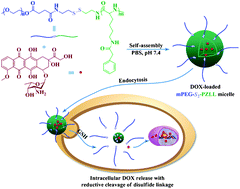This month sees the following Journal of Materials Chemistry C articles that are in the top ten most accessed for January:
High-performance pure blue phosphorescent OLED using a novel bis-heteroleptic iridium(iii) complex with fluorinated bipyridyl ligands
Florian Kessler , Yuichiro Watanabe , Hisahiro Sasabe , Hiroshi Katagiri , Md. K. Nazeeruddin , Michael Grätzel and Junji Kido
J. Mater. Chem. C, 2013,1, 1070-1075
DOI: 10.1039/C2TC00836J
Development of high performance OLEDs for general lighting
Hisahiro Sasabe and Junji Kido
J. Mater. Chem. C, 2013,1, 1699-1707
DOI: 10.1039/C2TC00584K
Benzo[1,2-b:6,5-b’]dithiophene(dithiazole)-4,5-dione derivatives: synthesis, electronic properties, crystal packing and charge transport
Yulia A. Getmanenko , Marina Fonari , Chad Risko , Bhupinder Sandhu , Elena Galán , Lingyun Zhu , Paul Tongwa , Do Kyung Hwang , Sanjeev Singh , He Wang , Shree Prakash Tiwari , Yueh-Lin Loo , Jean-Luc Brédas , Bernard Kippelen , Tatiana Timofeeva and Seth R. Marder
J. Mater. Chem. C, 2013,1, 1467-1481
DOI: 10.1039/C2TC00805J
High-performance flexible asymmetric supercapacitors based on 3D porous graphene/MnO2 nanorod and graphene/Ag hybrid thin-film electrodes
Yuanlong Shao , Hongzhi Wang , Qinghong Zhang and Yaogang Li
J. Mater. Chem. C, 2013,1, 1245-1251
DOI: 10.1039/C2TC00235C
Bis(carbazolyl) derivatives of pyrene and tetrahydropyrene: synthesis, structures, optical properties, electrochemistry, and electroluminescence
Bilal R. Kaafarani , Ala’a O. El-Ballouli , Roman Trattnig , Alexandr Fonari , Stefan Sax , Brigitte Wex , Chad Risko , Rony S. Khnayzer , Stephen Barlow , Digambara Patra , Tatiana V. Timofeeva , Emil J. W. List , Jean-Luc Brédas and Seth R. Marder
J. Mater. Chem. C, 2013,1, 1638-1650
DOI: 10.1039/C2TC00474G
Cyanostilbene-based intelligent organic optoelectronic materials
Liangliang Zhu and Yanli Zhao
J. Mater. Chem. C, 2013,1, 1059-1065
DOI: 10.1039/C2TC00593J
Dithiazole-fused naphthalene diimides toward new n-type semiconductors
Xin Chen , Yunlong Guo , Luxi Tan , Ge Yang , Yonghai Li , Guanxin Zhang , Zitong Liu , Wei Xu and Deqing Zhang
J. Mater. Chem. C, 2013,1, 1087-1092
DOI: 10.1039/C2TC00308B
Naphthodithiophenes as building units for small molecules to polymers; a case study for in-depth understanding of structure–property relationships in organic semiconductors
Itaru Osaka , Shoji Shinamura , Toru Abe and Kazuo Takimiya
J. Mater. Chem. C, 2013,1, 1297-1304
DOI: 10.1039/C2TC00261B
Full-colour fluorescent materials based on mixed-lanthanide(iii) metal–organic complexes with high-efficiency white light emission
Huabin Zhang , Xiaochen Shan , Liujiang Zhou , Ping Lin , Renfu Li , En Ma , Xiangguang Guo and Shaowu Du
J. Mater. Chem. C, 2013,1, 888-891
DOI: 10.1039/C2TC00414C
Synthesis of graphene by low-temperature exfoliation and reduction of graphite oxide under ambient atmosphere
Bin Shen , Dingding Lu , Wentao Zhai and Wenge Zheng
J. Mater. Chem. C, 2013,1, 50-53
DOI: 10.1039/C2TC00044J
Why not take a look at the articles today and blog your thoughts and comments below.
Fancy submitting an article to Journal of Materials Chemistry C? Then why not submit to us today!
Comments Off on Top 10 most-read Journal of Materials Chemistry C articles in January
















